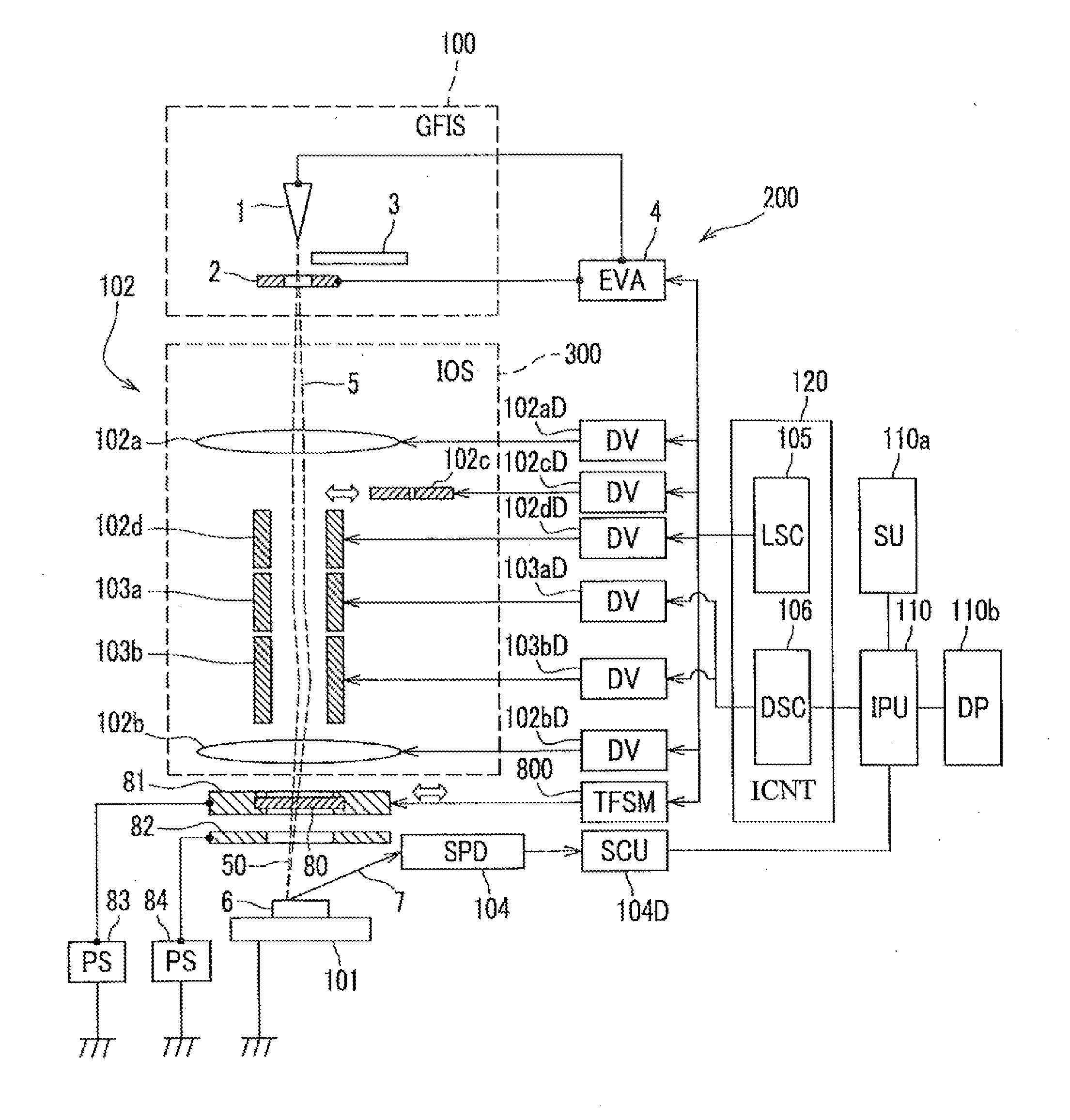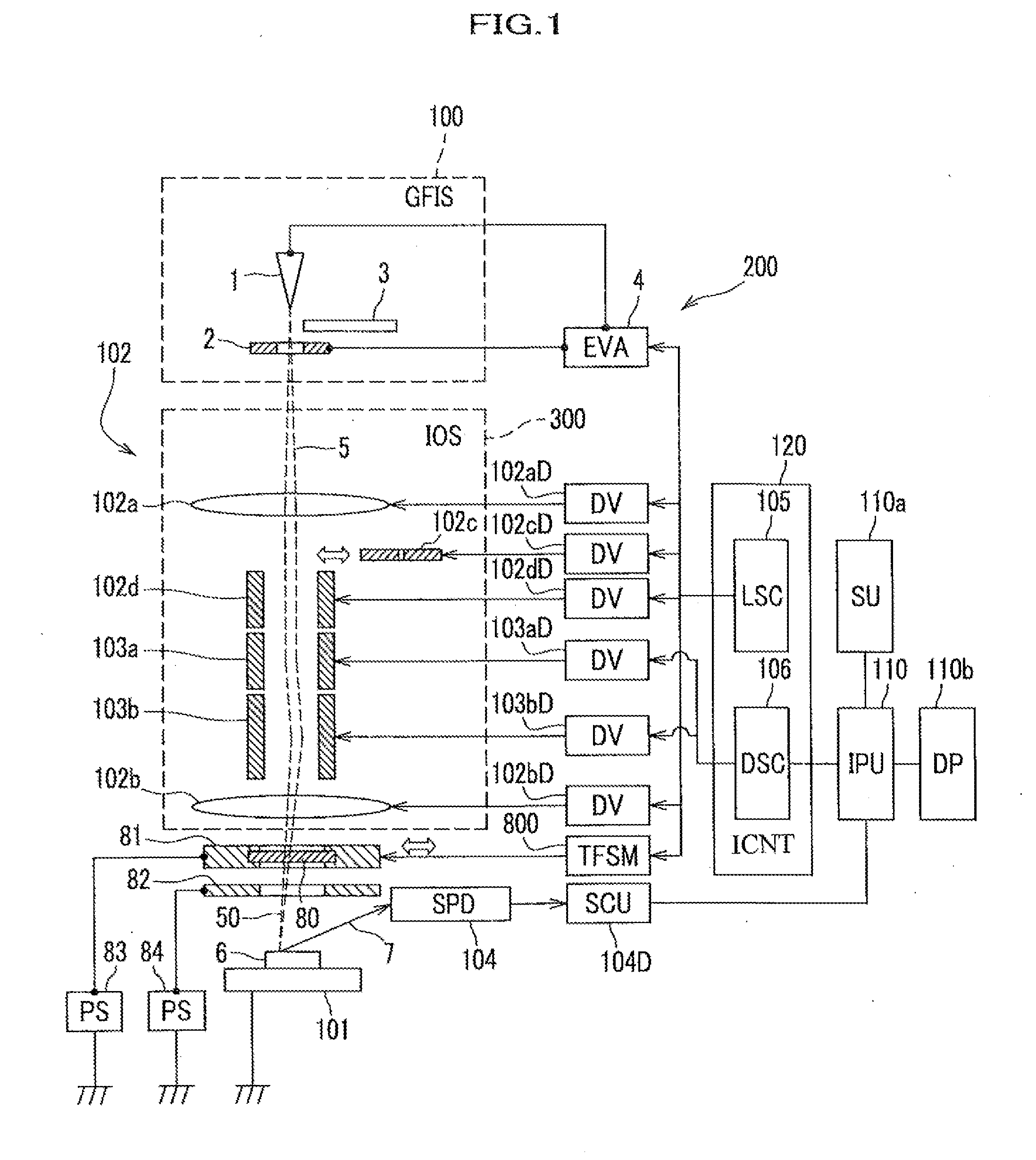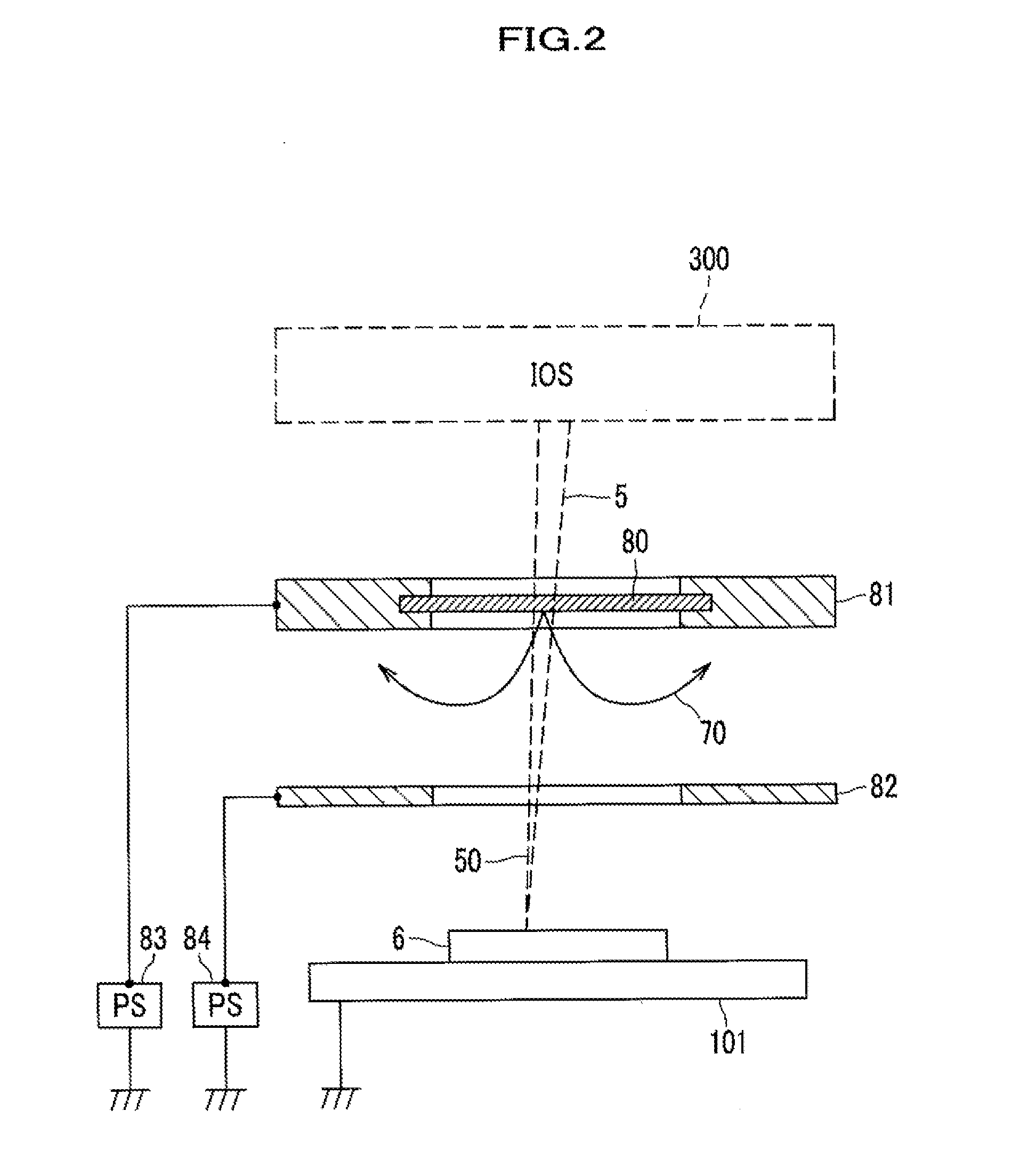Scanning ion microscope and secondary particle control method
a scanning ion microscope and secondary particle technology, applied in the field of scanning ion microscopes, can solve the problems of specimen image distortion with respect to actual image, inability to completely solve the problem of reducing the electrification of the specimen, and the existence of electric charge or secondary electron in the transmitted beam has not been paid attention, so as to prevent the distortion of the observation image
- Summary
- Abstract
- Description
- Claims
- Application Information
AI Technical Summary
Benefits of technology
Problems solved by technology
Method used
Image
Examples
first embodiment
[0036]FIG. 1 shows an entire configuration of a scanning ion microscope according to the present embodiment. The scanning ion microscope 200 according to the present embodiment is configured by incorporating a gas field ionization ion source (GFIS) 100 utilizing helium (He) into a focused ion beam (FIB) device produced for a conventional gallium-liquid metal ion source (Ga-LMIS) instead of the Ga-LMIS.
[0037]In FIG. 1, a scanning ion microscope 200 has a configuration in which a helium (He) ion beam 5 emitted from a GFIS 100 enter into an ion optical system 300 (ion optical series system) which cause the ion beams 5 to converge by the ion optical system 300, and thus irradiates a specimen 6 placed on a specimen stage 101 with the ion beams 5. Acceleration voltage of ions is 30 kV.
[0038]The GFIS 100 includes: an emitter tip 1; an extraction electrode 2; and a gas discharge outlet 3 of gas supplying piping, which supplies gas for ionization to an apex of the emitter tip. The emitter ti...
second embodiment
[0067]FIG. 3 shows a configuration near a thin film of the scanning ion microscope according to a second embodiment of the present invention. The scanning ion microscope in the present embodiment is fundamentally the same as that in FIG. 1 but is different in that there are additional elements near the thin film 80. FIG. 3 shows a peripheral portion of the thin film80.
[0068]If the thin film 80 is irradiated with the ion beam 5, a small amount of reflection particles and secondary electrons 71 are emitted to the side of the ion optical system 300. When they enter an electrostatic lens or a deflector in the ion optical system 300, the operation of the ion optical system 300 may become unstable as a result of inducement of unnecessary electrification onto the insulator portion. Accordingly, in the present embodiment, a shielding body 85 having an opening is arranged above the thin film 80 for blocking the reflection particles and secondary electrons 71. Although a part of the particles...
third embodiment
[0070]FIG. 4 shows a configuration near a thin film of the scanning ion microscope according to a third embodiment of the present invention. The scanning ion microscope in the present embodiment is fundamentally the same as that shown in FIG. 1 but is different in that there are additional elements near the thin film 80. FIG. 4 shows a peripheral portion of the thin film 80. It has a feature of having a several-molecules layer of ionic liquid 80a dispersed on the silicon nitride thin film 80 similar to the first embodiment. Here, C10H15F6N3O4S2 (C10H15F6N3O4S2) (CAS No. 174899-83-3) is used for the ionic liquid 80a.
[0071]In the present embodiment, since the thin film 80 effectively becomes electrically-conductive as a result of the ionic liquid 80a, restrictions in selecting the material for the thin film 80 itself are freed. That is, the thin film 80 may be a complete insulator. Since the acceleration voltage of the ion beam 5 is low, it is effective even when the electrical condu...
PUM
 Login to View More
Login to View More Abstract
Description
Claims
Application Information
 Login to View More
Login to View More - R&D
- Intellectual Property
- Life Sciences
- Materials
- Tech Scout
- Unparalleled Data Quality
- Higher Quality Content
- 60% Fewer Hallucinations
Browse by: Latest US Patents, China's latest patents, Technical Efficacy Thesaurus, Application Domain, Technology Topic, Popular Technical Reports.
© 2025 PatSnap. All rights reserved.Legal|Privacy policy|Modern Slavery Act Transparency Statement|Sitemap|About US| Contact US: help@patsnap.com



